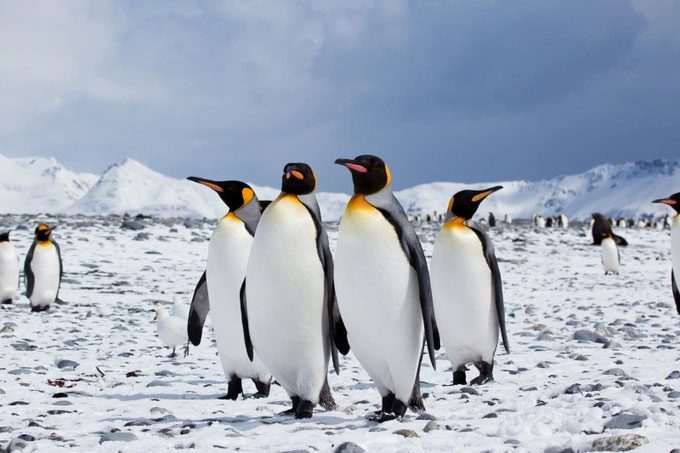Antarctica is the only continent where the wildlife appears to be safe from a particularly dangerous chemical.
The persistent chemical PFAS (short for per- and polyfluoroalkyl substances) is a non-biodegradable compound used in consumer products such as textiles, paper, and food packaging for dyeing and lubrication.

Antarctica is the only place on Earth seemingly safe from PFAS. (Photo: Getty).
For a long time, these substances have been produced and used across various industries worldwide. The concern is that these compounds persist in the environment and in the human body for a very long time. Their structure cannot be broken down and accumulates over time.
Similar to humans, animals can accumulate PFAS by eating fish, grazing, drinking water from rivers and lakes, or simply by breathing in the air.
According to a report published on February 22 by the Environmental Working Group (EWG) – a non-profit organization that researches and advocates for household chemicals, this has led to widespread contamination of living organisms.
Researchers here compiled 125 peer-reviewed studies that tested wildlife for the presence of PFAS over the past five years.
According to David Andrews, a senior scientist at EWG, all studies in the assessment found PFAS present in animals, birds, or fish. Only one place on Earth is safe for wildlife from PFAS, and that is Antarctica.
“This is truly a global pollution issue and has the potential to impact wildlife everywhere,” Andrews stated in an interview.

Controlling PFAS is considered a top priority to ensure the health and survival of species on Earth. (Photo: FDA).
For many years, wildlife globally has struggled against habitat loss, climate change, and poaching. The new report indicates that contamination from persistent chemicals could pose another threat to the survival of many species.
In fact, the effects of PFAS on the health of living organisms have been thoroughly studied in humans. From this chemical, we find links to various health issues, including certain cancers, thyroid disease, reduced fertility, developmental delays, liver damage, high cholesterol, and decreased immune response.
The U.S. Environmental Protection Agency even considers PFAS to be “hazardous substances” and is working to establish regulations to minimize their presence in clean water.
They are also urging organizations to replace PFAS by choosing alternative compounds. Last month, the European Union (EU) proposed a ban on the production, sale, and use of 10,000 items containing PFAS. This proposal is currently under review.
In the U.S., the EPA is expected to announce national drinking water regulations for PFAS by the end of 2023, including enforceable limits on pollution levels.


















































